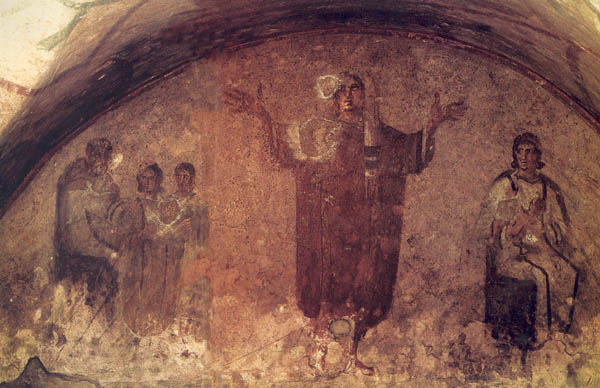Image Details

Scala/Art Resource, New York, NY
The Catacomb of Priscilla in Rome. Although Christians did not use this catacomb until the third century, the Prisca and Aquila mentioned in the New Testament may have been freed slaves of the Acilian family, for whom this catacomb originally served as a tomb. The Latin name Acilius was sometimes written Aquilius, from which Aquila is easily derived. Moreover, Prisca and its diminutive Priscilla were common names in that family. As freed slaves, Prisca and Aquila typically would have adopted names from their master’s family.
These frescoes, painted in the second half of the third century, depict events from the life of the deceased, seen at center with arms raised in an attitude of religious devotion. At left, a bishop delivers a blessing at the man’s wedding; at right, the man’s wife holds their baby. At least two other interpretations view the central figure as a woman.
